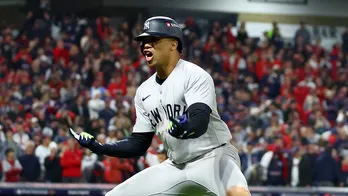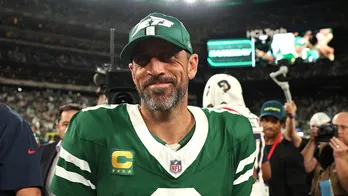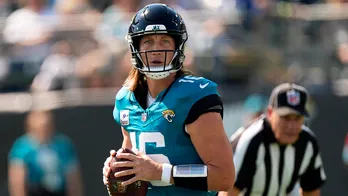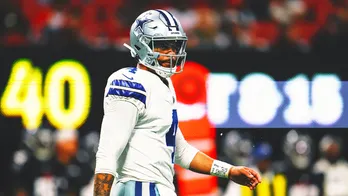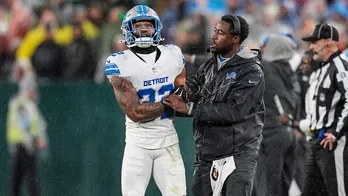Dahiya to grapple for gold
What do you do if you are trailing nine points to two, the clock has a little over a minute-and-a-half left on it, and you are fighting the match of your life - a match that will decide if you become only the second Indian wrestler to get a shot at an Olympic gold medal? 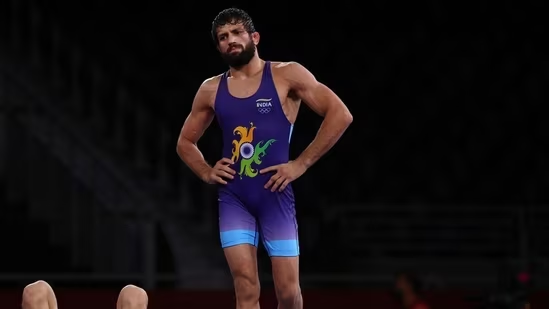 PREMIUM
PREMIUM
You win by the grandest way possible in the sport - a fall.
In what was a constantly shifting, roiling, furious battle, Ravi Dahiya, 23, exploded back from the brink of defeat to pin his opponent, Kazakhstan’s Nurislam Sanayev, in the 57kg category Freestyle wrestling semi-final at the Tokyo Olympics.
It has been a sensational run so far for Dahiya, the reigning Asian champion for the second successive year, who has now won every bout at the Olympics by either technical superiority (where a wrestler opens up a 10-point difference) or, in this case, a fall (where a wrestler holds both of the opponent’s shoulders on the mat simultaneously).
Dahiya will face the reigning world champion, Russian Zavur Uguev, in the final on Thursday. The wrestler from Haryana had lost to Uguev in the 2019 World Championship semi-finals, eventually winning a bronze in that tournament. After the nature of Wednesday’s win, anything’s possible.
“He was just one attack away from losing,” said Anil Mann, the wrestling coach who was by the mat for Dahiya’s fight. “We told him to be very patient, to focus and attack because in such situations a trailing wrestler generally gets puzzled, starts looking at the clock and makes mistakes.”
Dahiya himself left the wrestling arena in Makuhari Messe - a convention centre outside of Tokyo in Chiba city - looking displeased.
“I had no business conceding that lead against Sanayev. I am not happy with it,” Dahiya told PTI. “I have beaten Sanayev twice before, so I knew I can pull it off despite trailing by a huge margin. I was assured inside, but I should not have made it a close fight.”
Also Read | Echoes of history in Olympic glory
Dahiya is only the fifth Indian wrestler to win an Olympic medal. KD Jadhav became India’s first individual Olympic medallist when he won bronze during the 1952 Helsinki Games. It took 56 years for the next one - Sushil Kumar’s bronze in 2008 - but India can now boast of a medal in every edition of the Games since. In 2012, Kumar lost in the final to get silver, becoming India’s first individual double Olympic medallist (PV Sindhu joined the ranks with a bronze in badminton at Tokyo 2020). In the same edition, Yogeshwar Dutt won a bronze. In 2016, it was Sakshi Malik with a bronze.
Dahiya, who is from a village called Nahri in Sonepat, one of the cradles of Indian wrestling, idolised Kumar as a wrestler. He joined the wrestling school in Delhi’s Chhatrasal stadium, where Kumar trained, in 2008, after the Beijing bronze.
Kumar is now in jail on a murder charge for the death of a wrestler who was assaulted inside the stadium.
On the Olympic stage, it’s the wrestlers from Chhatrasal who have made all the breakthroughs. Kumar and Dutt trained together there from when they were children. Now there’s Dahiya from the Delhi school, but also Deepak Punia, who lost his 86kg semi-final a few minutes after Dahiya’s bout, steamrolled by American David Taylor. Punia is still in contention for a bronze through repechage. India’s most dominant male wrestler now, Bajrang Punia, whose campaign begins on August 6, is also from Chhatrasal.
In Dahiya’s semi-final, only the first two minutes of the bout did not fly by in a frenzy of attacks. At this stage, Sanayev was up by a single point, awarded against Dahiya for passivity. Sanayev then shot for the legs, and Dahiya defended by moving his legs away and leaning into his opponent. Dahiya got an underhand grip, and did something interesting - with a sudden burst of power and a big change in direction, he turned Sanayev. But Dahiya lost his grip and could not capitalise on it.
As soon as the second half started, Sanayev shot for the legs again and got a solid grip. A counter-attacking move slipped away from Dahiya, and suddenly the Kazakh had a dangerous hold from behind - the “fitley” or leg lace, the same move that got Dutt his medal in 2012. With this lock in place, Sanayev could make Dahiya rotate at will, and almost won the bout on technical superiority, racing on to nine points, before the Indian wrestler dug deep and Sanayev could not move him anymore.
Now, with nothing to lose, Dahiya went for broke – attacking furiously without a pause, with little over a minute and a half left on the clock. It paid off, the score moving up to 5-9 but with less than a minute left, Dahiya had to find something big.
And he did.
He shot for Sanayev’s legs, who defended by dropping to the knees. At this point, perhaps remembering how he got his first score of the bout, Dahiya, with just a single arm hooked under Sanayev’s arm, attempted a mighty, twisting heave.
Sanayev was on his back - in a flash, Dahiya had his full bodyweight on him, with a fierce headlock in place. Sanayev resisted, painfully, even biting down on Dahiya’s arm, but there was no let up. Dahiya had the pin and a chance to do what no Indian wrestler, despite the country’s rich culture of wrestling, has managed to do before. Win an Olympic gold.
“I still have some unfinished business to do,” Dahiya said. “I came with a target here and that is not complete yet.”
Experience unrestricted digital access with HT Premium
Explore amazing offers on HT + Economist Start 14 Days Free Trial Already Subscribed? Sign In
Disclaimer: The copyright of this article belongs to the original author. Reposting this article is solely for the purpose of information dissemination and does not constitute any investment advice. If there is any infringement, please contact us immediately. We will make corrections or deletions as necessary. Thank you.
